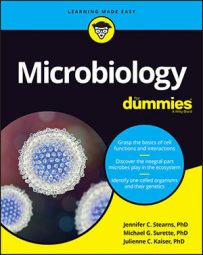Energy can be stored in the chemical bonds within molecules in the cell, but not all chemical bonds are equally energetic. When broken, some bonds will release more energy than others. A phosphate is a phosphorus atom bonded to three oxygen atoms (PO3). When it’s bonded to another molecule, the bond between them is called a phosphate bond. Breaking the phosphate bond releases a lot of energy.
Adenosine triphosphate (ATP) has two high-energy phosphate bonds and is the main form of energy currency in the cell. ATP is essential for transferring energy from highly exergonic (energy-releasing) reactions to endergonic (energy-consuming) ones.
For example, when one molecule of glucose is broken down by the cell for fuel, it releases way too much energy to be used all at once (around 2,800 kilojoules [kJ]), so the formation of many ATP molecules (carrying about 32 kJ each) can be used as a way to transfer this energy to be used to do work elsewhere.
Molecules containing high-energy bonds are themselves energy-rich compounds. These energy-rich compounds are the cell’s currency — they can be used to power energy-consuming biochemical reactions.
Another important group of energy-rich molecules are those derived from coenzyme A. One example of these is acetyl-CoA, which has an energy-rich sulfur-containing thioester bond instead of phosphate bonds. The energy released from the breakdown of acetyl-CoA is just enough to make a phosphate bond in ATP.
Although used for all types of metabolism, these molecules are essential for microbes that rely on a type of anaerobic metabolism called fermentation, where food is broken down in the absence of oxygen.
Both ATP and acetyl-CoA are short-term storage molecules — they’re usually used to power other reactions relatively quickly. For longer-term energy storage, microbes put their energy reserves elsewhere.

